When machinery parts experience constant friction or exposure, they risk early wear or corrosion. Such damage leads to costly repairs and downtime, impacting your operations significantly.
Rubber sleeves are protective coverings made from elastic rubber, designed to shield mechanical components from abrasion, corrosion, and environmental stress. They improve durability and extend component lifespan.
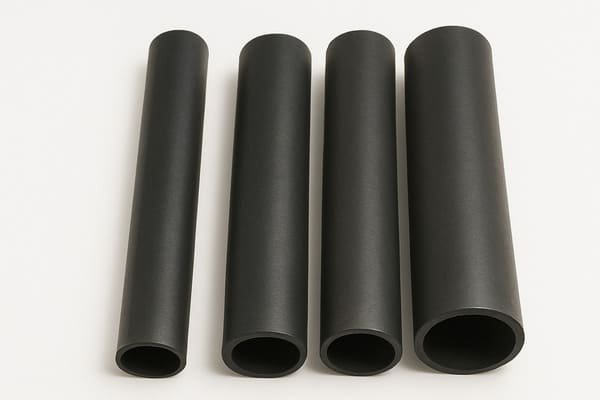
Understanding the benefits and various applications of rubber sleeves can save your business time and money, and streamline your equipment maintenance processes. Let me guide you through everything you need to know.
What are the main applications of rubber sleeves?
Repeated mechanical stress and harsh environmental conditions can severely damage machinery parts. How can you protect these critical components?
Rubber sleeves are primarily used for insulation, protection from abrasion, vibration damping, and corrosion prevention in various industrial and commercial applications, including automotive, HVAC, marine, and manufacturing sectors.
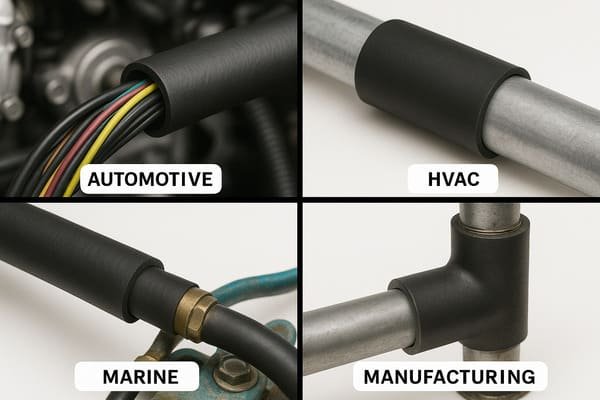
Automotive and Machinery
Rubber sleeves are essential in automotive and machinery sectors. They are used to insulate wires and hoses, reducing vibration, protecting components from oil, heat, and chemicals. For instance, automotive wiring harnesses commonly use rubber sleeves1 to prevent wire abrasion, electrical shorts, and maintain overall vehicle safety.
HVAC Systems
In HVAC systems, rubber sleeves play a critical role. They protect pipes, joints, and valves from temperature fluctuations and vibrations, helping to maintain system integrity. HVAC technicians often choose sleeves made from EPDM rubber2, which provides excellent heat resistance and flexibility, ensuring efficient system operation and durability.
Marine Applications
Marine equipment frequently utilizes rubber sleeves due to their resistance to water, salt, and UV rays. These sleeves protect cables, hoses, and connectors from corrosion and abrasive wear, making them indispensable on ships and offshore installations.
Here's a clear overview of common applications:
| Industry | Common Applications | Rubber Material Used |
|---|---|---|
| Automotive | Wiring harness, engine hoses | NBR, EPDM |
| HVAC | Pipe insulation, duct connectors | EPDM |
| Marine | Cables, hoses, connectors protection | EPDM, Neoprene |
| Manufacturing | Conveyors, rollers, vibration dampers | Natural Rubber, NBR |
What materials are rubber sleeves made from?
Selecting the wrong material for your rubber sleeve can lead to premature failure, causing unnecessary operational issues. So how do you choose correctly?
Rubber sleeves are manufactured from various materials, including EPDM, Neoprene, NBR, Silicone, and Natural Rubber. Each type has distinct properties suitable for different operating conditions, temperatures, and chemical exposures.
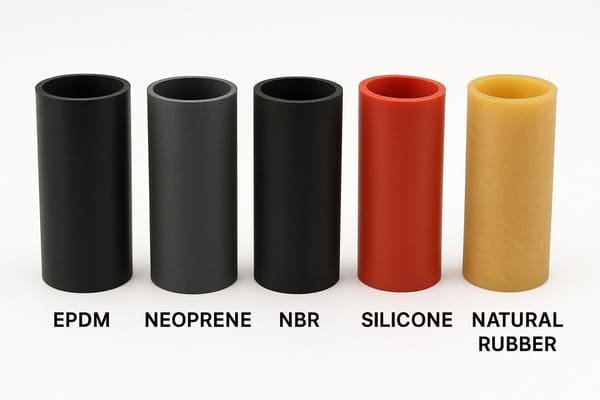
EPDM (Ethylene Propylene Diene Monomer)
EPDM3 rubber sleeves are highly resistant to ozone, weathering, and extreme temperatures. This makes EPDM ideal for outdoor applications and HVAC systems where durability is essential. EPDM sleeves maintain flexibility even in harsh environmental conditions.
NBR (Nitrile Butadiene Rubber)
NBR4 sleeves offer excellent resistance to oils, fuels, and chemicals, making them perfect for automotive and industrial applications where exposure to petroleum products is common.
Silicone
Silicone sleeves have superior heat resistance, remaining flexible across a wide temperature range (-60°C to +230°C). They are commonly used in medical equipment, food processing, and electronics due to their non-toxic nature.
Neoprene
Neoprene sleeves provide great resistance to weather, water, and moderate chemicals. They are commonly found in marine environments and outdoor electrical installations.
Below is a quick reference table for materials and their properties:
| Material | Temperature Range | Chemical Resistance | Typical Applications |
|---|---|---|---|
| EPDM | -50°C to +150°C | Weather, ozone | HVAC, outdoor equipment |
| NBR | -40°C to +120°C | Oils, fuels | Automotive, industrial |
| Silicone | -60°C to +230°C | High temperatures, non-toxic | Food, medical, electronics |
| Neoprene | -40°C to +125°C | Water, moderate chemicals | Marine, outdoor electrical |
How do I select the right rubber sleeve for my application?
Choosing a rubber sleeve without proper consideration can lead to compatibility issues and eventual failure. How do you ensure the perfect fit?
You must consider several critical factors when selecting rubber sleeves: material compatibility, temperature range, hardness, size, and certification requirements.
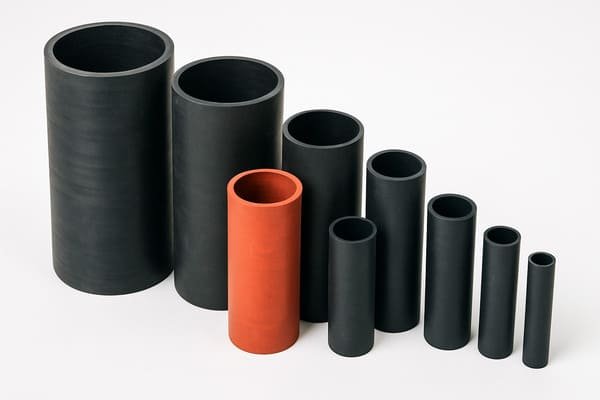
Material Compatibility
Check the chemical compatibility5 of your sleeve material with substances it will be exposed to. For example, NBR for petroleum-based oils, EPDM for UV and weather exposure, Silicone for food-safe applications.
Temperature Range
Ensure the sleeve material can withstand your application's operational temperature range6. EPDM and Silicone perform well at extreme temperatures, while NBR and Neoprene have narrower temperature tolerances.
Hardness (Durometer)
Rubber sleeve hardness affects flexibility and resistance to abrasion. Standard rubber hardness usually ranges between 40-70 Shore A. Softer sleeves (40 Shore A) offer flexibility; harder sleeves (70 Shore A) provide better abrasion resistance.
| Durometer (Shore A) | Flexibility | Abrasion Resistance |
|---|---|---|
| 40 | High | Moderate |
| 60 | Balanced | Good |
| 70 | Moderate | Excellent |
Certification
Verify required industry certifications, such as FDA for food applications or UL94 for fire resistance in electrical applications.
How are rubber sleeves manufactured?
Poor manufacturing practices can compromise sleeve quality, reducing their protective abilities. How are high-quality rubber sleeves produced?
Rubber sleeves are typically made by extrusion or molding processes, ensuring consistent quality, dimensions, and performance standards.
Here's a brief overview of these methods:
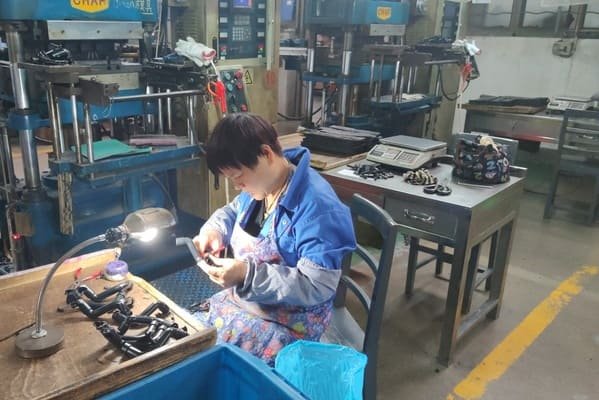
Extrusion Process
Rubber extrusion involves forcing rubber compound through a die to create continuous lengths. It’s suitable for producing sleeves with uniform cross-sections. Post-process curing ensures sleeve durability and flexibility.
Molding Process
Compression molding and injection molding methods produce complex-shaped sleeves with tight tolerances. Compression molding is ideal for simpler geometries, while injection molding offers precision and high-volume production capabilities.
Post-production Inspection
Quality rubber sleeve manufacturers, like us at Julong Rubber, implement strict quality control measures, including dimensional checks, hardness testing, and chemical resistance evaluations. These processes ensure sleeves meet customer requirements and industry standards.
Conclusion
Rubber sleeves provide crucial protection against abrasion, corrosion, and environmental factors. Selecting the correct material, size, and hardness ensures optimal performance and longevity of your equipment.
-
Explore this link to understand how rubber sleeves enhance safety and performance in automotive and machinery applications. ↩
-
Discover why EPDM rubber is the go-to choice for HVAC systems, ensuring durability and efficiency in temperature control. ↩
-
Explore the advantages of EPDM rubber for outdoor use, including its durability and resistance to harsh conditions. ↩
-
Learn about NBR rubber's exceptional resistance to oils and fuels, making it ideal for automotive and industrial uses. ↩
-
Understanding chemical compatibility is crucial for ensuring the longevity and safety of materials in various applications. ↩
-
Knowing the temperature range helps in selecting the right materials for specific applications, ensuring performance and safety. ↩








